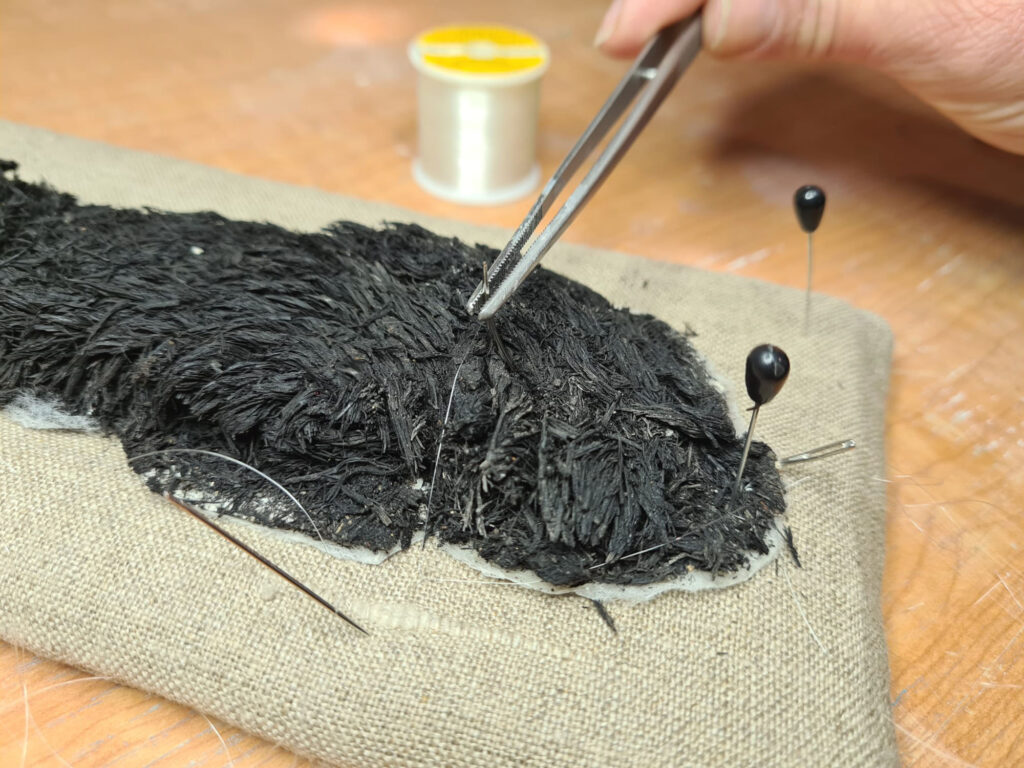Roman Sandal Made Of Grass Is Restored
Experts have painstakingly restored this Roman sandal that was made from grass and which according to carbon dating comes from the 4th Century AD.
The sandal would have been worn indoors much like a slipper in today’s world, unless one was Mark Antony, who apparently liked to wear them outside, drawing strong public criticism in the process.
The grass sandal, made using esparto, which is a type of grass from North Africa and the Iberian peninsular that was used to make a sturdy fibre, was found in the 1960s by members of the archaeological section of the Hiker Centre Eldense at the archaeological site of El Monastil, located in the municipality of Elda, in the south-eastern Spanish province of Alicante, in the Valencia region. Now that it has been restored, it is set to go on display in the museum.

The Roman sandal before the restoration process that took place in Elda, Spain, for four months. (Museo Arqueologico Elda/Real Press)
Antonio Manuel Poveda Navarro, the director of the Archaeological Museum of Elda and a Professor at the Alcala de Henares University told Real Press in an exclusive interview that not much was left of the sandal, at first, only its sole. The leather strap used to tie it to the wearer’s foot had completely disappeared.
After being discovered in the 1960s, the remains of the sandal, which had been burnt, just like other sandals that were found in Pompeii in Italy, were put inside a crystal vase and stuck to it with industrial glue, which was damaging the fibres. Last year, the museum decided that it was time to restore the sandal, as it is a rather popular artefact in its collection. They sent some samples to the United States to be tested using the Carbon 14 dating procedure in order to find out its age.
It was confirmed that the sandal dated back to the Roman Empire and that it had been made between the 4th and the 5th Centuries, which, according to Professor Poveda Navarro, “was almost at the end of the Roman Empire”. The sandal has now been restored by Eva Mendiola, who had a difficult job to do, as it took four months of hard work.

The Roman sandal had to undergo a difficult restoration process in Elda, Spain, for four months. (Museo Arqueologico Elda/Real Press)
Professor Poveda Navarro said: “The sandal was stuck to the bottom of a crystal vase and it was difficult to separate the vase from the sandal without destroying it.” After the sandal was successfully removed from the vase, it was ready to be restored. Professor Poveda Navarro said the expert restorer used “pliers and nylon thread” and had to “stitch the piece very carefully, so that the esparto grass did not become unbraided.”
The artefact was stitched to a methacrylate piece, a type of plastic polymer, that was wrapped in linen so that the sandal would remain in place. This piece is important because it is believed to be the oldest esparto grass sandal ever found on the Iberian Peninsula, which was known as Hispania at the time of the Roman Empire.
This type of sandal was widely used by the Romans. In Latin, it is called a ‘soleae’ or ‘sandalia’. The professor explained that it would only have been used at the wearer’s home, because it shows the ankle and at that time in history, only slaves would show that part of their body in public.

The Roman sandal had to undergo a difficult restoration process in Elda, Spain, for four months. (Museo Arqueologico Elda/Real Press)
The professor said: “Roman society used the sandals a lot at home. Every time a dinner with guests was celebrated, before lying down to eat in the ‘triclinium’, the slaves were called and they helped them remove their outdoor footwear so that the guests could wear the sandals inside the house during the meal.”
A ‘triclinium’ was a formal room in a Roman building used for dining. According to the professor, going out into the street with only sandals on was not well seen and was comparable to someone going to the supermarket today wearing slippers. However, he also said that various latin sources cite some important people in Roman times, such as the famous Roman general and consul Scipio Africanus and Mark Antony – the very same one who, legend has it, had a love affair with the Egyptian queen Cleopatra – who were often seen wearing sandals outside.
He added that “they were strongly criticised” for doing so. The expert also explained that different types of sandal wood used during the era. The ones made using esparto grass were more often used during the summer months, while ones with leather soles were more of a autumn or winter accoutrement.
Sandals could also be items of luxury, Professor explained. For instance, the Roman Empress Poppaea Sabina, who was Emperor Nero second wife, had sandals made for her using gold and precious stones. She even designed similar ones, using the same expensive materials, for her horses. It is however unclear if she planned to make any of her steeds consuls, as Emperor Caligula is famous for having wanted to do.
Regarding the owner of this particular sandal, the professor reported that it belonged to a short person. He believes that it was probably a woman from a low socio-economic background, as the sandals were very common and used by poor people when at home.



